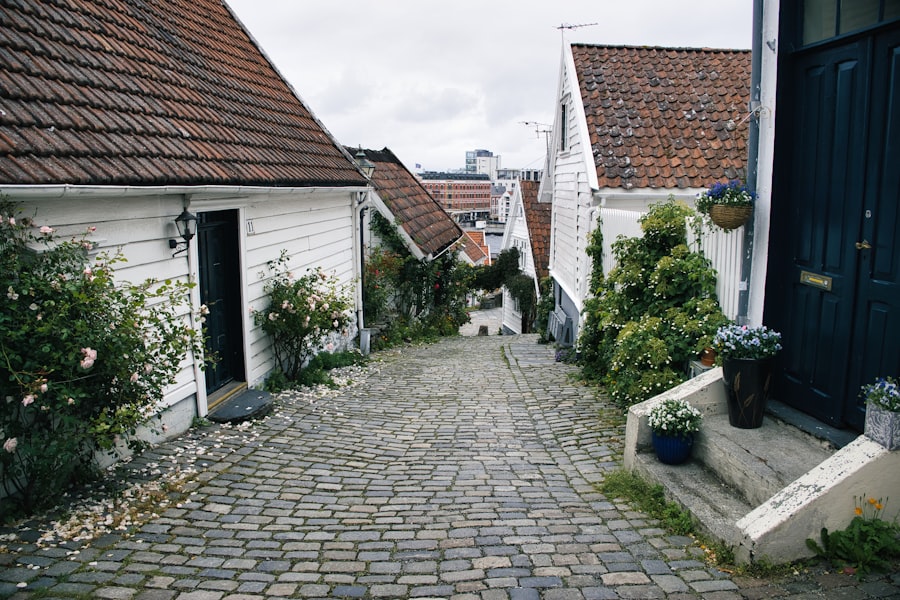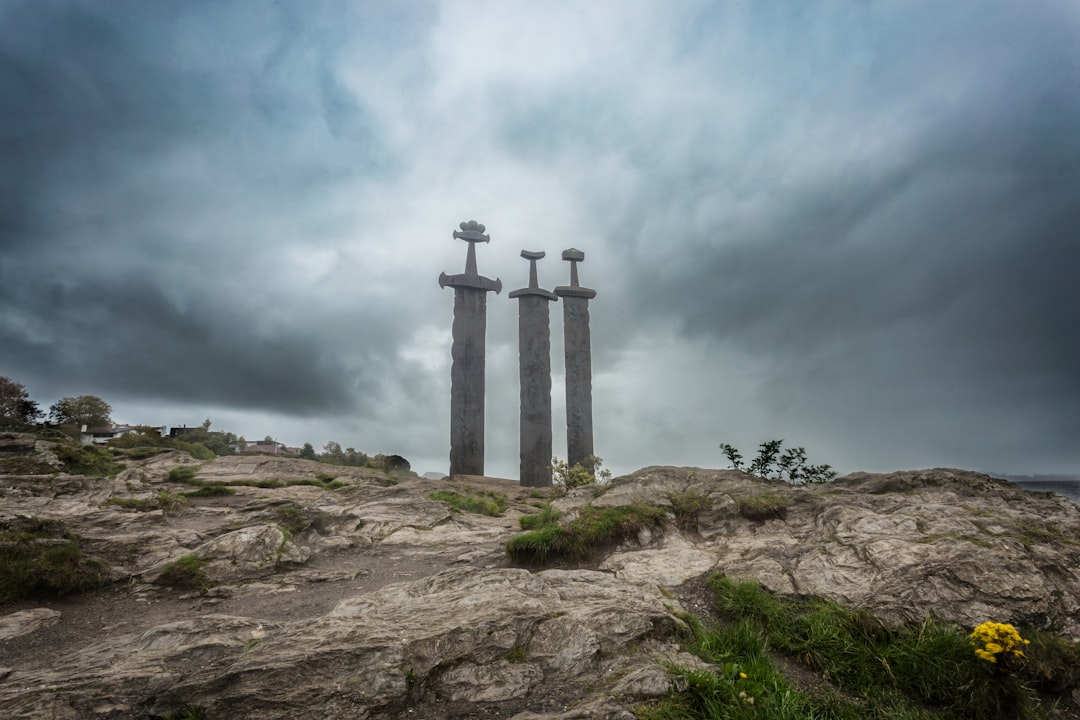Norwegian interior design is a captivating blend of simplicity, functionality, and a deep connection to nature. It reflects the country’s rich cultural heritage and its unique geographical landscape, which has significantly influenced the way Norwegians approach their living spaces. The minimalist aesthetic prevalent in Norway is not merely a design choice; it is a lifestyle that prioritises comfort, practicality, and an appreciation for the natural world.
As more people around the globe seek to create serene and uncluttered environments, the principles of Norwegian interior design offer valuable insights into achieving a harmonious home. The essence of Norwegian design lies in its ability to create spaces that are both beautiful and functional. This approach resonates with those who value quality over quantity, as well as those who wish to cultivate a sense of peace and tranquillity in their homes.
By embracing the principles of Norwegian interior design, individuals can transform their living spaces into sanctuaries that reflect their personal style while remaining grounded in the natural world. Plan your relocation with confidence. Book a personal meeting with the Norway Relocation Group today. https://norwayrelocation.no/one-hour-strategy-session/
Summary
- Norwegian interior design is known for its minimalist aesthetic and focus on natural elements.
- The origins of minimalist aesthetic in Norway can be traced back to the country’s harsh climate and the need for practical and functional design.
- Key elements of Norwegian interior design include clean lines, natural materials, and a neutral colour palette.
- Natural light plays a crucial role in Norwegian interiors, creating a sense of warmth and connection to the outdoors.
- The colour palette and materials in Norwegian minimalist aesthetic are inspired by the country’s natural landscapes, with a focus on light woods and muted tones.
The Origins of Minimalist Aesthetic in Norway
The minimalist aesthetic in Norway can be traced back to the country’s historical and cultural roots. Influenced by the harsh climate and rugged landscapes, early Norwegian architecture and design focused on practicality and efficiency. Traditional Norwegian homes were built to withstand the elements, often featuring simple lines and functional layouts that maximised space and utility.
This emphasis on functionality laid the groundwork for the minimalist movement that would later emerge in the 20th century. As Norway evolved, so too did its design philosophy. The post-war period saw a shift towards modernism, with architects and designers embracing clean lines, open spaces, and a focus on craftsmanship.
This movement was not just about aesthetics; it was also a response to the changing social landscape, where people began to value simplicity and sustainability. The minimalist aesthetic became synonymous with Norwegian design, reflecting a desire for clarity and order in an increasingly complex world.
Key Elements of Norwegian Interior Design

At the heart of Norwegian interior design are several key elements that define its unique character. One of the most prominent features is the use of natural materials, such as wood, stone, and textiles. These materials not only evoke a sense of warmth and comfort but also connect the interior spaces to the surrounding environment.
The use of timber, particularly from local sources, is a hallmark of Norwegian design, creating a seamless transition between indoor and outdoor living. Another essential element is the emphasis on functionality. Norwegian interiors are designed with practicality in mind, ensuring that every piece of furniture serves a purpose while contributing to the overall aesthetic.
This focus on utility extends to storage solutions, which are often cleverly integrated into the design to maintain a clutter-free environment. By prioritising functionality alongside beauty, Norwegian interior design creates spaces that are both inviting and efficient.
The Role of Natural Light in Norwegian Interiors
Natural light plays a pivotal role in Norwegian interior design, particularly given the country’s long winters and limited daylight hours. Designers often maximise natural light by incorporating large windows and open layouts that allow sunlight to flood into living spaces. This not only enhances the aesthetic appeal but also promotes a sense of well-being and connection to the outdoors.
In addition to large windows, the strategic use of mirrors and light-coloured surfaces can help reflect light throughout a space, creating an airy and bright atmosphere. The careful consideration of natural light is essential in Norwegian interiors, as it contributes to the overall mood and functionality of a home. By harnessing the power of natural light, designers can create environments that feel spacious and uplifting, even during the darkest months of the year.
Colour Palette and Materials in Norwegian Minimalist Aesthetic
The colour palette in Norwegian interior design is typically characterised by soft, muted tones that evoke a sense of calm and serenity. Whites, greys, and earthy hues dominate the landscape, creating a neutral backdrop that allows for personal expression through carefully chosen accents. This restrained colour scheme reflects the natural surroundings of Norway, where the landscape is often defined by subtle variations in colour and texture.
Materials play a crucial role in enhancing this minimalist aesthetic. Natural fibres such as wool, linen, and cotton are commonly used in textiles, while wood remains a staple in furniture and architectural elements. The combination of these materials creates a tactile experience that invites touch and interaction.
By focusing on quality materials that age gracefully over time, Norwegian interior design embodies a sense of timelessness that transcends fleeting trends.
Functional and Practical Furniture in Norwegian Interior Design

Furniture in Norwegian interior design is characterised by its functional and practical nature. Pieces are often designed with versatility in mind, allowing them to adapt to various needs and spaces. For instance, modular furniture can be rearranged or reconfigured to suit different occasions or preferences, making it ideal for modern living.
Moreover, many Norwegian designers prioritise craftsmanship and sustainability when creating furniture. This commitment to quality ensures that each piece not only serves its intended purpose but also contributes to the overall aesthetic of the space. By investing in well-made furniture that stands the test of time, individuals can create interiors that are both beautiful and enduring.
Embracing Nature in Norwegian Interiors
A defining feature of Norwegian interior design is its deep-rooted connection to nature. This philosophy encourages the incorporation of natural elements into living spaces, fostering a sense of harmony between indoor and outdoor environments. Plants are often used as decorative accents, bringing life and vibrancy into homes while improving air quality.
In addition to greenery, natural textures such as stone and wood are frequently employed to create a warm and inviting atmosphere. The use of these materials not only enhances the aesthetic appeal but also serves as a reminder of Norway’s stunning landscapes. By embracing nature within their interiors, individuals can cultivate a sense of peace and tranquillity that reflects the beauty of their surroundings.
Creating a Cozy and Inviting Atmosphere in Minimalist Norwegian Interiors
Despite its minimalist approach, Norwegian interior design places great emphasis on creating cosy and inviting atmospheres. This is achieved through thoughtful layering of textures, warm lighting, and personal touches that reflect individual style. Soft textiles such as throws and cushions add warmth to spaces while inviting relaxation.
Lighting also plays a crucial role in establishing a cosy ambiance. In addition to utilising natural light, designers often incorporate warm artificial lighting through pendant lamps, floor lamps, or candles to create an inviting glow during darker months. By combining these elements thoughtfully, individuals can transform their homes into havens of comfort that encourage relaxation and connection.
Incorporating Hygge in Norwegian Interior Design
The concept of hygge—a Danish term that embodies comfort, coziness, and contentment—aligns seamlessly with Norwegian interior design principles. While hygge originates from Denmark, its essence resonates deeply within Norway’s approach to creating warm and inviting spaces. Incorporating hygge into Norwegian interiors involves curating environments that prioritise comfort through soft furnishings, warm lighting, and personal touches.
To embrace hygge within a Norwegian context, individuals can focus on creating intimate gathering spaces where friends and family can come together. This might involve arranging seating areas for conversation or incorporating elements such as blankets and candles that encourage relaxation. By fostering an atmosphere of warmth and connection, individuals can enhance their living spaces while embracing the spirit of hygge.
Tips for Embracing the Minimalist Aesthetic in Your Home
Embracing the minimalist aesthetic inspired by Norwegian interior design can be achieved through several practical steps. First and foremost, decluttering is essential; removing unnecessary items allows for a more serene environment where each piece has purpose and meaning. Consider adopting a “less is more” philosophy when selecting decor items or furniture pieces.
Next, focus on incorporating natural materials into your home—wooden furniture or stone accents can significantly enhance your space’s aesthetic while maintaining a connection to nature. Additionally, opt for a neutral colour palette with soft tones that promote tranquillity; this will create an inviting backdrop for your chosen decor. Finally, pay attention to lighting; utilise both natural light during the day and warm artificial lighting at night to create an atmosphere that feels both spacious and cosy.
By following these tips, you can successfully embrace the minimalist aesthetic while infusing your home with elements inspired by Norwegian design principles.
Embracing the Beauty of Norwegian Minimalist Interior Design
In conclusion, Norwegian minimalist interior design offers a refreshing perspective on creating harmonious living spaces that prioritise functionality without sacrificing beauty. By embracing natural materials, maximising light, and fostering connections with nature, individuals can cultivate environments that reflect their values while promoting well-being. As more people seek solace in their homes amidst an increasingly chaotic world, the principles of Norwegian design provide valuable guidance for achieving serenity through simplicity.
By incorporating these elements into our own spaces—whether through thoughtful furniture choices or mindful decor—we can all embrace the beauty inherent in minimalist living inspired by Norway’s rich cultural heritage.
Register for a Norwegian class at the NLS Norwegian Language School now!

